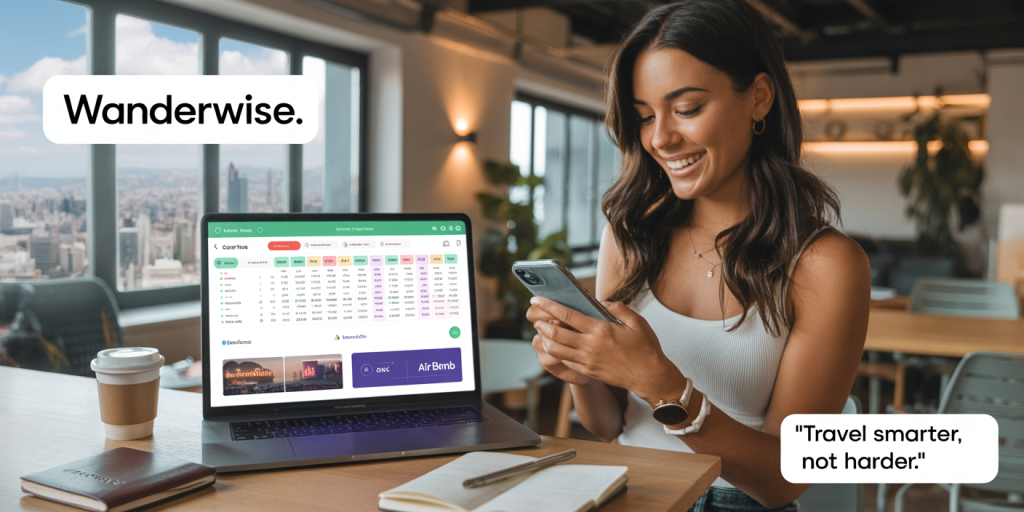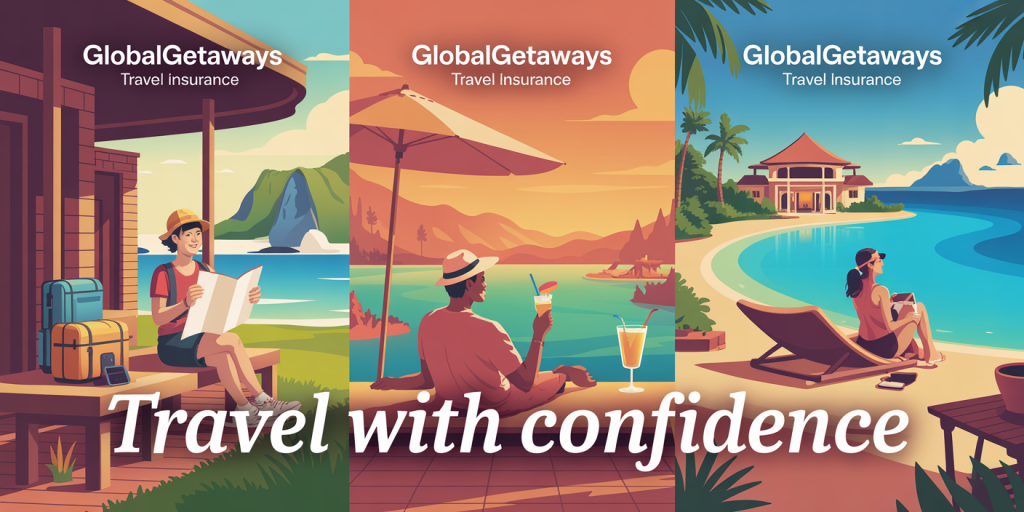Planning a vacation involves anticipating costs and making informed financial decisions to ensure a stress-free, enjoyable experience. Setting a vacation budget is one of the most crucial steps to prevent overspending and maximize your enjoyment without financial strain. With rising travel costs and diverse vacation styles catering to different budgets, understanding how to strategize your spending is essential.
A well-crafted budget allows you to align your dream vacation with your financial realities, balancing airfare, accommodation, meals, and activities within your means. This article provides a comprehensive guide to setting a vacation budget using practical examples, statistical data, and comparative tools to help you plan efficiently and smartly.
—
Understanding the Components of a Vacation Budget
Before diving into numbers, it’s important to break down the typical categories that constitute your vacation budget. This segmentation clarifies where your money will go and what areas might offer flexibility for savings.
Major Expenses to Consider
Airfare or transportation is often the largest single item. For example, the average round-trip flight in the U.S. for domestic travel costs approximately $350, but international trips—say to Europe—can average over $1,000, according to the U.S. Bureau of Transportation Statistics (2022). This significant variation means budgeting for travel can vastly differ by destination.
Accommodations also vary widely. Budget hotels or hostels can range from $30 to $100 per night, whereas luxury resorts may command prices north of $400. According to Statista (2023), the average U.S. traveler spends about $150 per night on lodging. Food, activities, and local transportation complete the major spending categories, with food averaging $50 per day for a moderate traveler and activities ranging from free city tours to expensive adventure sports.

Flexible vs. Fixed Costs
Understanding which costs are fixed and which are variable helps in adjusting your budget. Fixed costs typically include airfare, pre-paid tours, or packaged deals, whereas variable costs might be daily food, souvenirs, or last-minute activities. Recognizing this distinction enables you to have room for adjustments or savings without compromising the essentials.
For example, if airfare consumes a large portion of your budget, you might opt for budget accommodations or self-catered meals to balance overall expenses.
—
Tools and Methods for Budget Creation
Setting a vacation budget requires reliable tools and techniques to predict and allocate expenses realistically. Employing spreadsheet software or dedicated budgeting apps can streamline this process.
Utilizing Budgeting Templates and Apps
Spreadsheets like Microsoft Excel or Google Sheets offer customizable templates where you can input estimated costs for different categories. For instance, creating columns for transportation, lodging, food, and entertainment, then using formulae to sum totals helps maintain a clear overview.
Travel-specific apps such as Trail Wallet or TripCoin track expenses in real-time, allowing adjustments on-the-go. These tools synchronize with your phone and can categorize your expenses, providing instant feedback on your spending status.
Conducting Price Comparisons
Before finalizing a budget, researching and comparing prices for flights, hotels, and activities across multiple platforms is crucial. Websites such as Kayak, Skyscanner, and Airbnb allow users to analyze offerings and filter by price, ratings, and availability.
Practical example: Sarah planned a week-long trip to Paris. Using Skyscanner, she found a flight priced at $750 round trip but discovered another airline offering $650 with a longer layover. By allocating $650 to airfare and carefully choosing a $100/night Airbnb instead of $200/night hotels, she saved $700 that was redirected toward museum passes and dining experiences.
—
Estimating Daily Expenses Accurately
Incorporating daily expenses into your budget requires understanding typical spending in your chosen destination. These include meals, transportation, entry fees, and incidentals.
Researching Local Costs
Using data from sources such as Numbeo, Travelers can obtain average daily costs of living and tourism expenses in hundreds of cities worldwide. For example, Numbeo reports that the average daily cost for a traveler in Bangkok is approximately $40, including meals, transportation, and minor attractions, whereas in New York City, daily expenses average $120.
These figures help create day-to-day budget targets and prevent surprise costs. Travelers can choose to economize in certain areas to spend more on others, such as splurging on an upscale restaurant while relying on public transport.
Accounting for Unexpected Expenses
Travel is unpredictable. Setting aside a contingency amount of 10–15% of your total budget for emergencies, changes in plans, or extras like tipping and souvenirs is a prudent approach.
For example, if your total estimated budget is $2,000, reserve an emergency fund of $200-$300. This buffer can prevent resorting to credit or stress if your itinerary changes or unexpected expenses arise.
—
Practical Examples and Comparative Budget Table
To solidify the budgeting process, let’s review three distinct vacation budget scenarios based on destination and travel style, each lasting seven days.
| Budget Category | Economy Traveler (East Coast US) | Mid-Range Traveler (Europe) | Luxury Traveler (Southeast Asia) |
|---|---|---|---|
| Airfare | $300 | $1,200 | $1,000 |
| Accommodation | $350 (7 nights, $50/night) | $700 (7 nights, $100/night) | $1,400 (7 nights, $200/night) |
| Food & Dining | $210 ($30/day) | $420 ($60/day) | $700 ($100/day) |
| Activities & Tours | $140 ($20/day) | $350 ($50/day) | $700 ($100/day) |
| Local Transport | $70 | $140 | $210 |
| Contingency (15%) | $197 | $466 | $576 |
| Total Budget | $1,267 | $3,276 | $4,586 |
This table illustrates how destination choice and preferred travel style dramatically influence budget size. The economy traveler opts for affordable lodging and minimal activities. The mid-range traveler adds comfort and explores more paid attractions, while the luxury traveler splurges on high-end hotels and tours.
—
Tips for Staying Within Your Vacation Budget
Allocating a budget is only the first step; sticking to it requires discipline and smart strategies during your trip.
Pre-Booking and Package Deals
Booking flights, accommodations, and tours well in advance often yields better prices and bundles. According to Expedia Group (2023), travelers booking trips at least 60 days ahead save an average of 15%.
Prepaid packages also help control costs by consolidating multiple expenses into a single upfront payment, minimizing surprise outlays.
Monitoring Spending During Travel
Keeping receipts, using budgeting apps, and reviewing daily expenses help you remain aware of your spending habits. Adjustments such as swapping expensive meals for local street food or choosing free sightseeing options keep your budget intact.
Traveler John, visiting Rome last year, initially spent $100 daily on restaurants. Using a budgeting app, he realized overspending by day 3 and shifted to affordable deli meals, saving $150 for a guided tour later in the week.
—
Future Trends in Vacation Budgeting
Looking ahead, emerging technology and changing travel behaviors will continue reshaping how travelers plan and manage vacation budgets.
Increased Use of Artificial Intelligence (AI)
AI-powered travel platforms are evolving to provide personalized budget planning based on individual preferences, historical pricing, seasonal trends, and even currency fluctuations. These systems can alert travelers when prices drop or recommend budget-friendly alternatives dynamically.
Growing Popularity of Sustainable and Flexible Travel
As sustainability becomes a priority, travelers increasingly seek eco-friendly yet budget-conscious options. This includes choosing local accommodations, public transport, or volunteer travel programs, often resulting in cost savings paired with authentic experiences.

Flexible ticketing and accommodation policies, accelerated by the COVID-19 pandemic, also change how budgets are computed—with refundable or insurance-backed bookings reducing risk but sometimes increasing upfront costs.
—
Setting a vacation budget is an empowering step in travel planning, enabling you to enjoy your getaway while maintaining financial health. By understanding spending categories, utilizing tools, and adapting budgets realistically, anyone can craft a vacation plan tailored to their desires and means. Through continued innovation in travel technology and shifting preferences, budgeting practices will grow ever more refined, helping travelers worldwide maximize their experiences without overspending.
